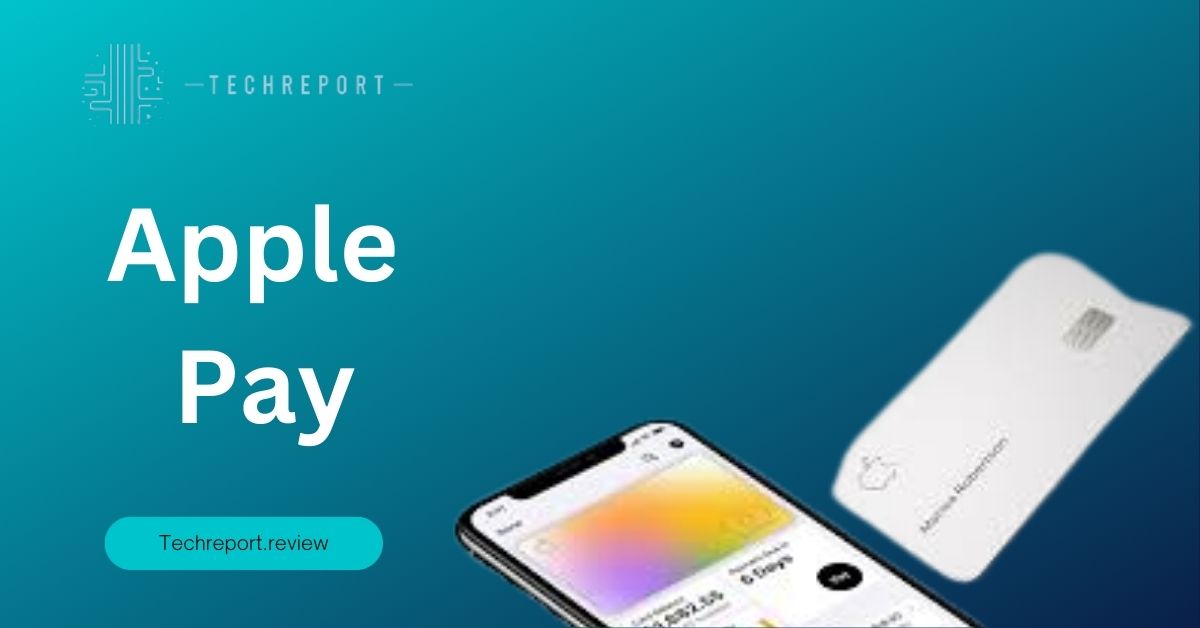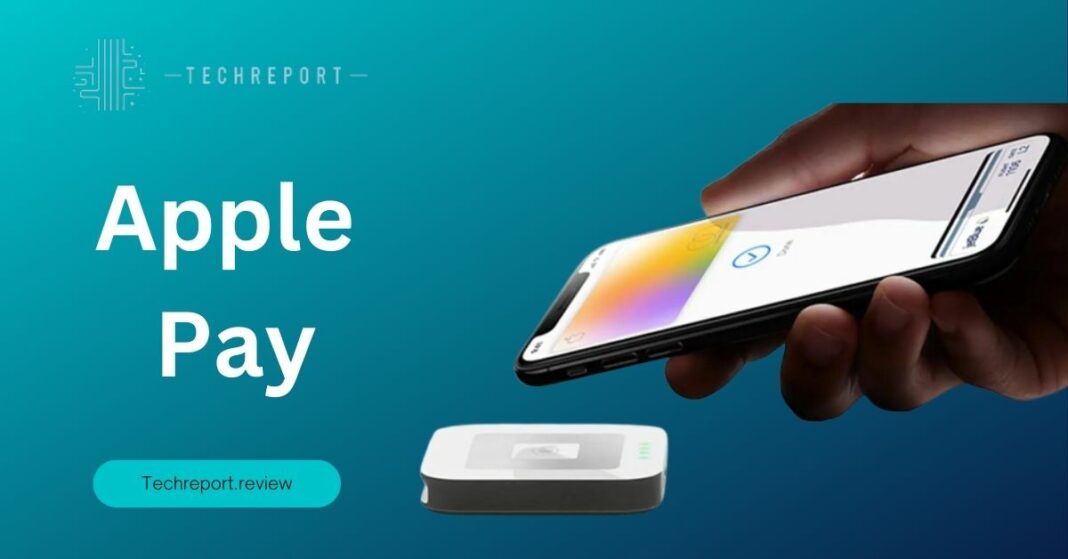Mobile payments have revolutionized the way we make transactions, offering a seamless and secure alternative to traditional payment methods. With the rise of smartphones and wearable devices, the era of carrying physical wallets and digging for cash or cards is gradually fading away. Mobile payment solutions provide a convenient and efficient way to make purchases, whether in-store or online, with just a tap or a touch.
Among the various mobile payment options available, Apple Pay stands out as one of the leading and most widely adopted platforms. Developed by Apple Inc., the tech giant renowned for its innovation and user-centric approach, Apple Pay offers a seamless and secure payment experience to millions of users worldwide. By leveraging the power of NFC (Near Field Communication) technology and integrating it with the devices consumers already rely on, such as iPhones, Apple Watches, and iPads, Apple Pay has transformed the way we pay for goods and services.
With its wide acceptance among merchants, robust security measures, and user-friendly interface, Apple Pay has become the go-to mobile payment solution for Apple device owners. Whether you’re grabbing a cup of coffee, shopping for groceries, or making online purchases, Apple Pay allows you to make transactions with ease and confidence, all while keeping your sensitive financial information safe and private.
By the end, you’ll have a thorough understanding of how Apple Pay works and why it has emerged as a trusted and widely embraced mobile payment solution. So, let’s dive in and unlock the convenience and possibilities that Apple Pay brings to the world of digital transactions.
How Does Apple Pay Work?

Apple Pay relies on two key technologies: Near Field Communication (NFC) and a secure element. NFC enables seamless communication between the Apple device and the payment terminal, allowing for contactless transactions. The secure element, a dedicated chip within the device, stores and encrypts sensitive payment information, ensuring that it remains secure and protected from unauthorized access.
When you initiate a payment using Apple Pay, your device generates a unique device account number, which is stored securely in the secure element. This account number is different from your actual credit or debit card number, adding an extra layer of security. It ensures that your card information is never shared with the merchant during the transaction.
Setting up Apple Pay is straightforward. First, ensure that your device is compatible with Apple Pay. Currently, Apple Pay is supported on iPhone models starting from iPhone 6 or later, Apple Watch models, iPad models with Touch ID or Face ID, and Mac models with Touch ID.
To set up Apple Pay, follow these steps:
- Open the Wallet app on your device.
- Tap on the “Add” button to add a card.
- You can choose to add a card either by manually entering the details or by using the device’s camera to capture the card information.
- Once the card is added, you may need to verify it through a verification process, which may vary depending on your bank or card issuer.
- After verification, your card is added to Apple Pay, and you can start using it for payments.
It’s important to note that your card issuer must support Apple Pay for you to add your card to the service. Most major banks and credit card companies now offer Apple Pay compatibility.
Apple Pay employs biometric authentication methods to ensure secure and convenient transactions. Depending on your device, you can authenticate payments using either Touch ID or Face ID.
Touch ID: Touch ID utilizes your fingerprint as a means of authentication. When making a payment, you simply place your registered finger on the Touch ID sensor, which is typically located on the device’s home button or on the power button (for newer devices). Once your fingerprint is verified, the transaction is authorized, and the payment is completed.
Face ID: Face ID, available on newer iPhones and iPads, uses facial recognition technology to authenticate payments. To authorize a payment, you simply look at the device, and Face ID scans and recognizes your face. If your face matches the registered face on the device, the payment is authorized, and the transaction is completed.
These authentication methods add an extra layer of security, ensuring that only authorized users can make payments using Apple Pay. By leveraging the unique biometric data stored securely on the device, Apple Pay provides a seamless and secure payment experience, eliminating the need for entering PINs or passwords.
With a clear understanding of the underlying technology and the setup process, let’s explore the myriad benefits and features of Apple Pay in the upcoming sections.
Safety and Security of Apple Pay
Apple Pay is designed with robust security measures to ensure the safety of your transactions and protect your sensitive information. Here are some key security features implemented by Apple Pay:
- Tokenization: When you add a credit or debit card to Apple Pay, the actual card details are never stored on the device or Apple’s servers. Instead, a unique Device Account Number is generated, encrypted, and securely stored in the device’s secure element. This Device Account Number is used for transactions, ensuring that your actual card information remains secure and is not shared with merchants.
- Encryption: All transactions made with Apple Pay are encrypted. This means that the data transmitted between your device, the merchant, and the payment network is encrypted to prevent unauthorized access. Encryption helps protect your payment information and ensures that it can only be accessed by authorized parties.
- Biometric Authentication: Apple Pay uses biometric authentication methods such as Touch ID and Face ID to authorize transactions. These features rely on your unique fingerprint or facial features, adding an extra layer of security. Only you can authorize payments using your biometric data, making it significantly more secure than traditional PINs or passwords.
Tokenization is a fundamental security feature of Apple Pay. When you make a payment, instead of transmitting your actual card information, a token is generated. This token acts as a substitute for your card details, ensuring that your sensitive information is not exposed during the transaction process. Even if a hacker intercepts the token, it is useless without the corresponding encryption key, which is securely stored on the device.
In addition to tokenization, encryption plays a vital role in securing Apple Pay transactions. Encryption involves encoding the data transmitted between your device and the payment terminal. This encrypted data can only be decrypted by authorized parties, ensuring that your payment information remains confidential and protected from unauthorized access.
By combining tokenization and encryption, Apple Pay ensures that your card information is never directly exposed during transactions, providing an additional layer of security and reducing the risk of fraud or data breaches.
Using Apple Pay offers several benefits in terms of privacy and fraud protection:
- Privacy: When you make a payment with Apple Pay, your actual card details are never shared with merchants. This protects your privacy and reduces the risk of your card information being compromised in case of a merchant data breach. Additionally, Apple does not store transaction details that can be tied back to you, further enhancing your privacy.
- Authentication Requirements: Each transaction with Apple Pay requires authentication, either through Touch ID, Face ID, or a passcode. This ensures that only authorized users can make payments, providing an additional layer of protection against unauthorized transactions.
- Fraud Protection: Apple Pay offers enhanced fraud protection by leveraging advanced security features. The combination of tokenization, encryption, and biometric authentication makes it extremely difficult for fraudsters to misuse your payment information. In case of unauthorized transactions, you have recourse through your card issuer’s fraud protection policies.
- Lost Device Protection: If you lose your iPhone or Apple Watch, you can use Find My iPhone or Find My Watch to remotely lock or erase the device. This helps prevent unauthorized access to your Apple Pay information, providing an added layer of protection.
By using Apple Pay, you can enjoy the convenience of contactless payments while benefiting from robust security measures that protect your sensitive information, safeguard your privacy, and mitigate the risk of fraud. With peace of mind, you can confidently make payments knowing that Apple Pay prioritizes your safety and security.
Setting Up Apple Pay on Your iPhone
Setting up Apple Pay on your iPhone is a straightforward process. Here’s a step-by-step guide to help you get started:
- Check compatibility: Ensure that your iPhone model supports Apple Pay. Apple Pay is available on iPhone models with Touch ID or Face ID, including iPhone 6 or later.
- Open the Wallet app: Locate the Wallet app on your iPhone. It has a white icon with a blue background and resembles a stylized wallet.
- Tap on “Add Credit or Debit Card”: Once you open the Wallet app, look for the option to “Add Credit or Debit Card.” Tap on it to begin the setup process.
- Follow the on-screen prompts: Your iPhone will guide you through the setup process. You may be prompted to enter your Apple ID and password if you haven’t already set it up. Ensure that you are connected to a secure Wi-Fi or cellular network during this process.
- Position your card within the frame: Place your credit or debit card within the frame displayed on your screen. Your iPhone’s camera will capture the card information automatically. Alternatively, you can choose to enter the card details manually.
- Verify the card details: Once your card details are captured or entered manually, verify the information to ensure accuracy. Make sure the card number, expiration date, and cardholder name are correct.
- Agree to the terms and conditions: Read and accept the terms and conditions presented on your screen. These outline the terms of using Apple Pay with your card issuer.
- Verify your card with your card issuer: To ensure the security of your card, your card issuer may require additional verification. This process may vary depending on your card issuer. You may be prompted to provide additional information or receive a verification code via email, text message, or phone call.
- Set a default card (optional): If you have added multiple cards to Apple Pay, you can choose a default card for convenient payments. The default card will be used for transactions unless you specifically select another card during payment.
- Enable Touch ID or Face ID: To authorize transactions with Apple Pay, you can set up either Touch ID or Face ID authentication. Follow the on-screen instructions to configure this feature. If you prefer, you can also use a passcode for authentication.
Once you have completed these steps, you are all set to start using Apple Pay on your iPhone.
Adding credit or debit cards to Apple Pay is a simple process. Here’s how you can do it:
- Open the Wallet app: Locate and open the Wallet app on your iPhone.
- Tap on “Add Credit or Debit Card”: Within the Wallet app, tap on the option to “Add Credit or Debit Card.” This will initiate the card setup process.
- Position your card within the frame: Place your credit or debit card within the frame displayed on your screen. Your iPhone’s camera will capture the card information automatically. Alternatively, you can choose to enter the card details manually by tapping on the option provided.
- Verify the card details: After the card information is captured or entered manually, verify the details to ensure accuracy. Double-check the card number, expiration date, and cardholder name.
- Agree to the terms and conditions: Read and accept the terms and conditions presented on your screen. These terms outline the agreement between you, your card issuer, and Apple regarding the use of Apple Pay with your card.
- Verify your card with your card issuer: To ensure the security of your card, your card issuer may require additional verification. The process may vary depending on your card issuer. You may be prompted to provide additional information or receive a verification code via email, text message, or phone call.
- Set a default card (optional): If you have added multiple cards to Apple Pay, you can choose a default card for convenient payments. The default card will be used for transactions unless you specifically select another card during payment.
- Enable Touch ID or Face ID: To authorize transactions with Apple Pay, you can set up either Touch ID or Face ID authentication. Follow the on-screen instructions to configure this feature. If you prefer, you can also use a passcode for authentication.
During the setup process of Apple Pay, you may encounter some common issues or require troubleshooting assistance. Here are a few tips to help you address them:
- Unsupported card: Apple Pay supports a wide range of credit and debit cards; however, not all cards may be compatible. Ensure that your card is issued by a participating bank or financial institution that supports Apple Pay.
- Connection issues: Make sure you have a stable internet connection, either through Wi-Fi or cellular data, during the setup process. If you experience connectivity issues, try switching between Wi-Fi and cellular data or connecting to a different network.
- Card verification: If you encounter issues during the card verification process, ensure that you have provided accurate information and follow the instructions provided by your card issuer. Contact your card issuer’s customer support if you require further assistance.
- Software updates: Ensure that your iPhone is running the latest version of iOS. Software updates often include bug fixes and improvements that can help resolve any setup-related issues.
- Restarting your device: If you encounter any unexpected errors or issues during setup, try restarting your iPhone. This can help refresh the device and resolve temporary glitches.
If you encounter persistent issues or have specific questions during the setup process, referring to Apple’s official support documentation or reaching out to Apple Support can provide further assistance tailored to your specific situation.
Using Apple Pay for Online Purchases
Apple Pay provides a convenient and secure way to make online purchases with supported merchants and apps. Here’s how you can use Apple Pay for online transactions:
- Look for the Apple Pay button: When you are ready to make a purchase on a supported website or app, keep an eye out for the Apple Pay button. It typically features the Apple Pay logo or the “Buy with Apple Pay” option.
- Tap the Apple Pay button: Once you have selected your desired item or service, tap the Apple Pay button at checkout. This will initiate the payment process with Apple Pay.
- Verify your purchase: On your iPhone, iPad, or Mac, a payment sheet will appear, displaying the details of your purchase. Review the information and confirm the transaction.
- Authenticate with Touch ID, Face ID, or passcode: To authorize the transaction, use Touch ID (if available), or Face ID, or enter your device passcode when prompted. This adds an extra layer of security to ensure that only you can complete the payment.
- Complete the transaction: Once you have authenticated, Apple Pay will securely transmit the payment information to the merchant or app, and your purchase will be confirmed. You will receive a payment confirmation and a digital receipt for your records.
Apple Pay is widely supported by a growing number of online retailers and apps, making it convenient for users to make purchases with just a few taps. Some popular online platforms and apps that integrate Apple Pay include:
- E-commerce websites: Many well-known e-commerce websites support Apple Pay, allowing users to make purchases with ease. Look for the Apple Pay option during checkout on platforms such as Amazon, eBay, and Best Buy.
- Food delivery and ride-hailing apps: Popular food delivery services like Uber Eats, DoorDash, and Grubhub, as well as ride-hailing apps like Uber and Lyft, offer Apple Pay as a payment option. This makes ordering meals or booking a ride quick and hassle-free.
- Ticketing and event apps: Ticketing platforms like StubHub and Eventbrite, as well as entertainment apps like Fandango, integrate Apple Pay to streamline the ticket purchase process. You can securely buy tickets to movies, concerts, sports events, and more.
- Travel and accommodation apps: Many travel and accommodation booking apps, including Airbnb, Hotels.com, and Expedia, accept Apple Pay. This enables seamless payment for flights, hotel reservations, and other travel-related services.
- Subscription services: Apple Pay is also integrated with various subscription-based services, such as Netflix, Spotify, and Apple Music. Subscribers can conveniently pay for their subscriptions using Apple Pay without the need to enter their payment details repeatedly.
Using Apple Pay for online purchases offers several benefits in terms of convenience and security:
- Quick and streamlined checkout: With Apple Pay, you can avoid the hassle of manually entering your payment and shipping information. The process is streamlined, allowing you to complete transactions quickly with just a few taps.
- Enhanced security: Apple Pay uses advanced security measures to protect your payment information. It assigns a unique Device Account Number to your device, keeping your actual card details secure and reducing the risk of data breaches.
- Biometric authentication: To authorize transactions, Apple Pay leverages biometric authentication methods like Touch ID and Face ID. This adds an extra layer of security by ensuring that only you can authorize payments.
- Card privacy: When you use Apple Pay for online purchases, your actual credit or debit card details are not shared with the merchant. Instead, a unique transaction code is generated for each payment, enhancing your privacy and reducing the risk of fraudulent activities.
- Compatibility with major payment networks: Apple Pay is compatible with major payment networks, including Visa, Mastercard, American Express, and Discover. This broad acceptance makes it easier to use Apple Pay across a wide range of online retailers and services.
By utilizing Apple Pay for online purchases, you can enjoy a seamless and secure payment experience, saving time and ensuring the privacy of your financial information. Look for the Apple Pay option whenever you shop online and take advantage of its convenience and security features.
In Crux
As mobile payments continue to revolutionize the way we transact, embracing the convenience and security of Apple Pay can enhance your payment experiences. Here are a few reasons why you should consider adopting Apple Pay:
- Seamlessness and Efficiency: By using Apple Pay, you can streamline your payment process and reduce the hassle of carrying physical wallets or entering payment information repeatedly. The simplicity and efficiency of Apple Pay can save you time and effort.
- Embracing the Future: Mobile payments are becoming increasingly popular and are expected to become the norm in the coming years. By adopting Apple Pay now, you are aligning yourself with the future of payments, staying ahead of the curve, and enjoying the benefits of cutting-edge technology.
- Enhanced Security: With the growing risk of data breaches and identity theft, security is of paramount importance. Apple Pay’s robust security measures, such as tokenization and biometric authentication, provide an added layer of protection for your transactions, giving you peace of mind.
- Embracing Innovation: Apple Pay is a prime example of how technology can simplify and enhance our everyday lives. By embracing Apple Pay, you are embracing innovation and the transformative power of mobile payments.
In conclusion, Apple Pay offers a secure, convenient, and efficient way to make payments in stores and online. With its wide acceptance, integration with various apps, and commitment to privacy, Apple Pay is at the forefront of the mobile payment revolution. Embrace the future of payments by adopting Apple Pay and experience the ease and benefits it brings to your daily transactions.
How much did you like our detailed Apple Pay: Revolutionizing Mobile Payments Also, please share these Blogs with your friends on social media.
Related Blogs
- Is iPhone 14 Worth the Hype
- Unblock Banned Apps
- Best Cheap VPN Services
- Antenna vs Cable TV
- iPhone 6 vs Nexus 6
- WiFi and Internet
- Apple Vision Pro
[WPSM_AC id=1265]




























